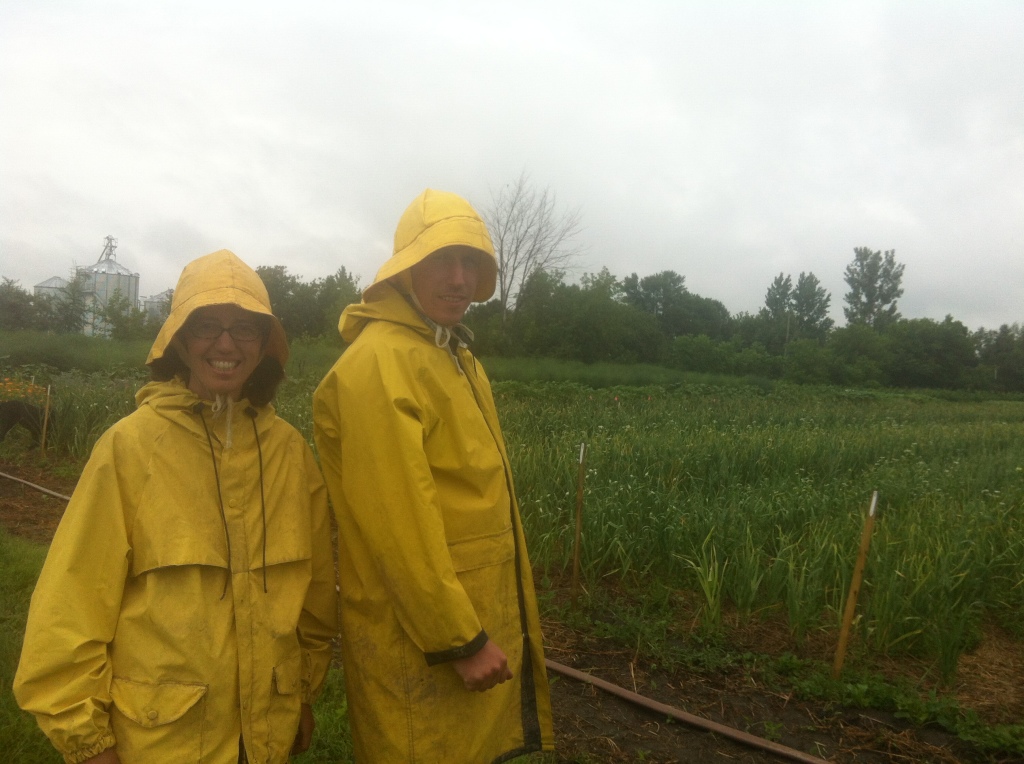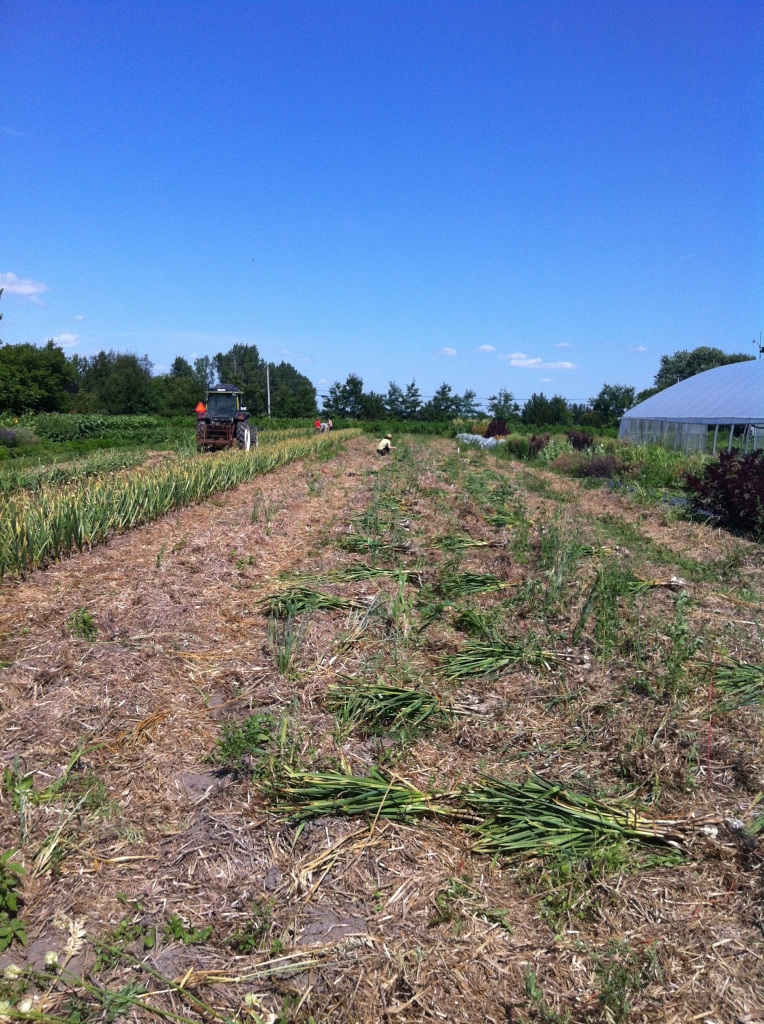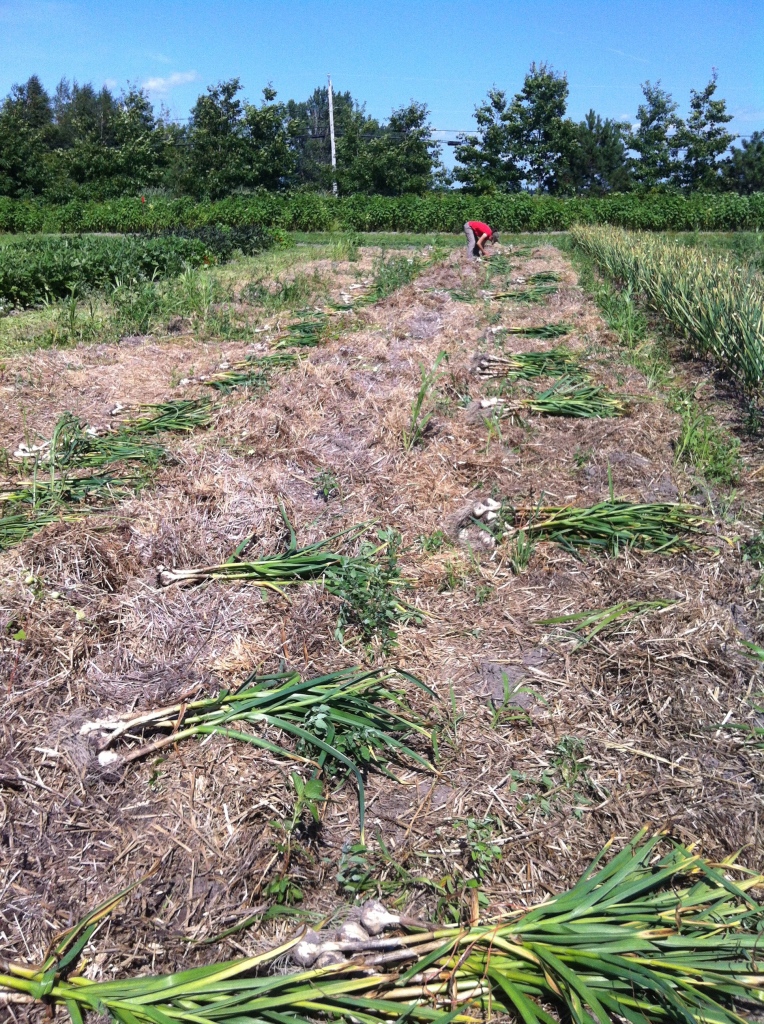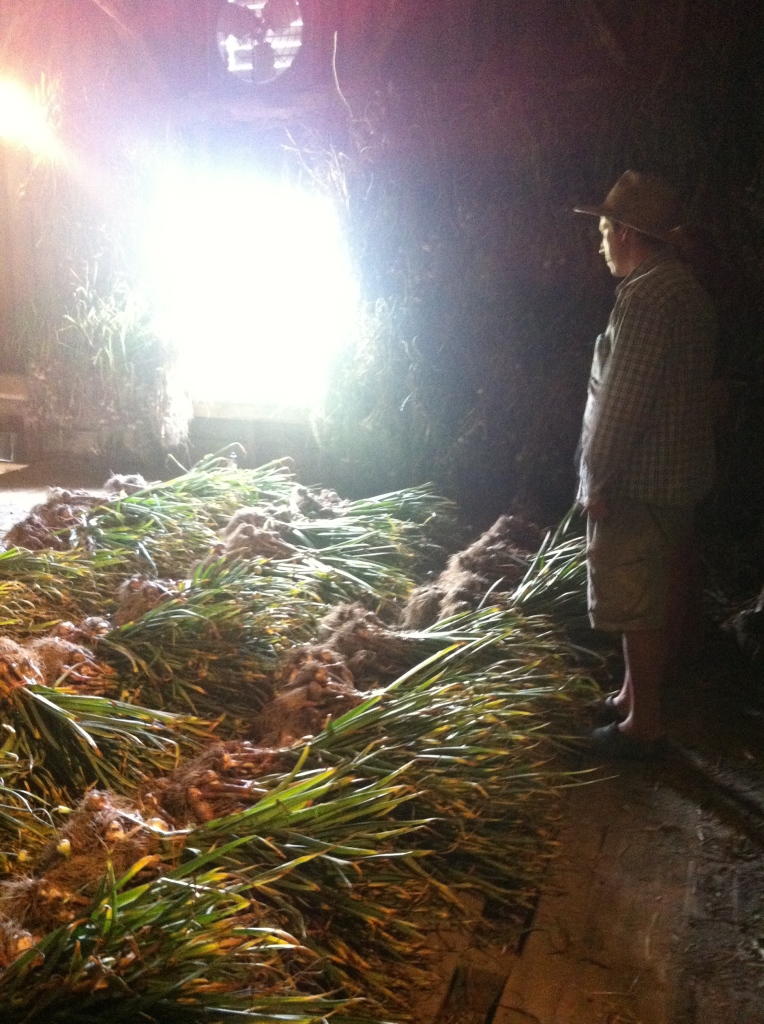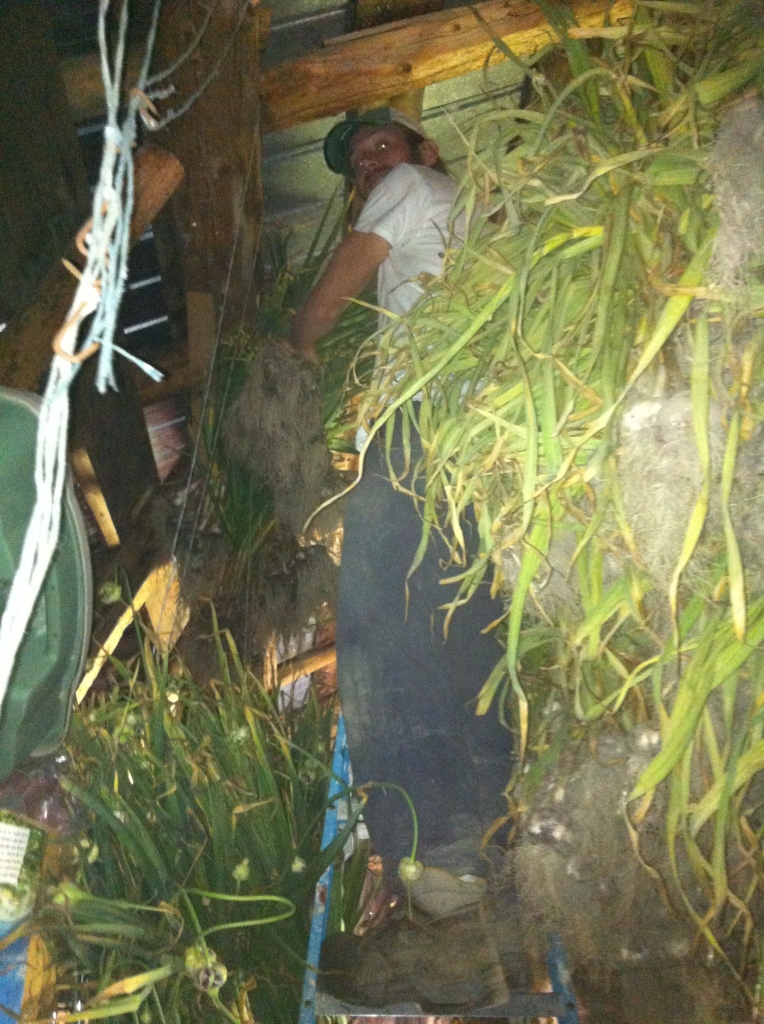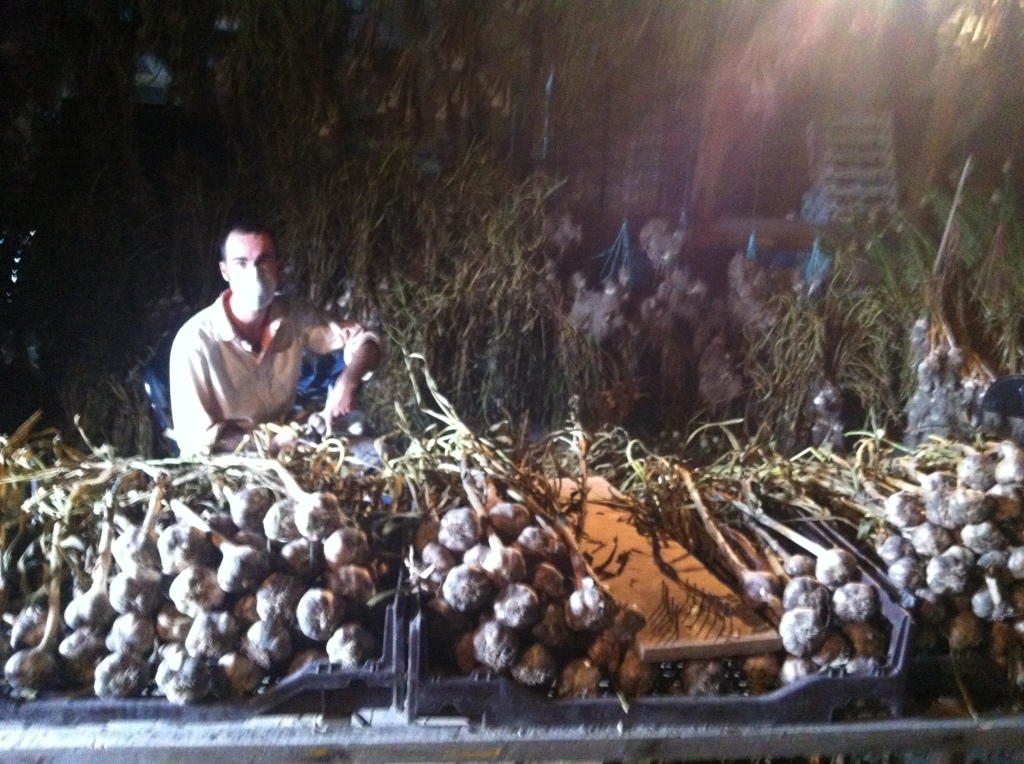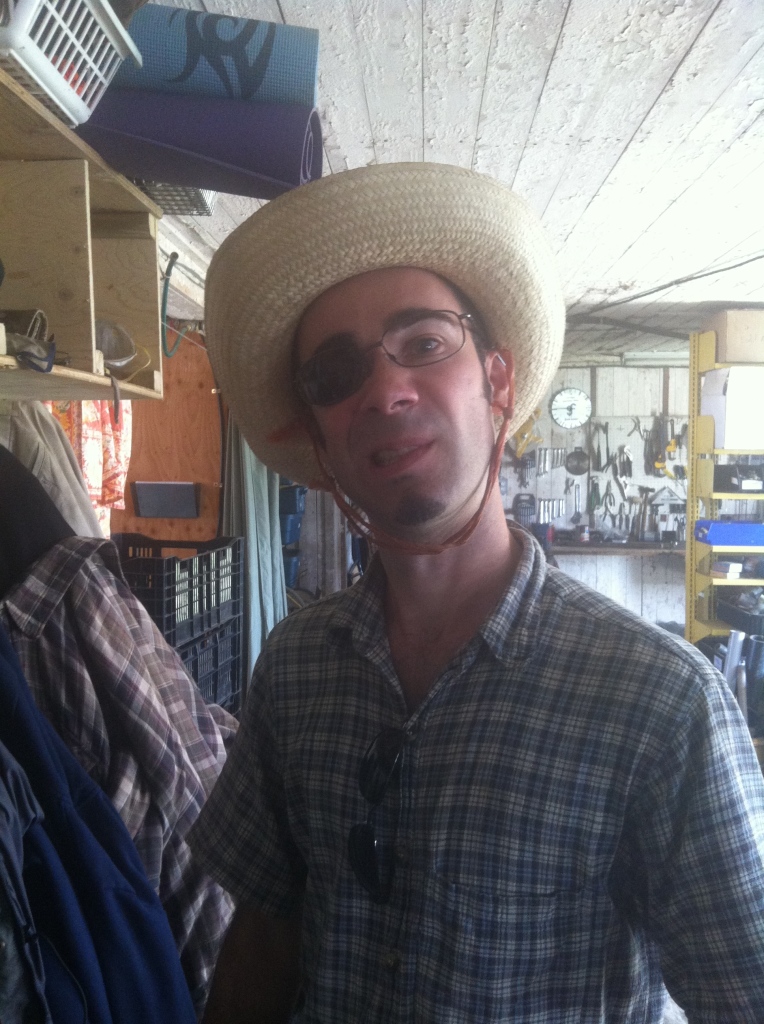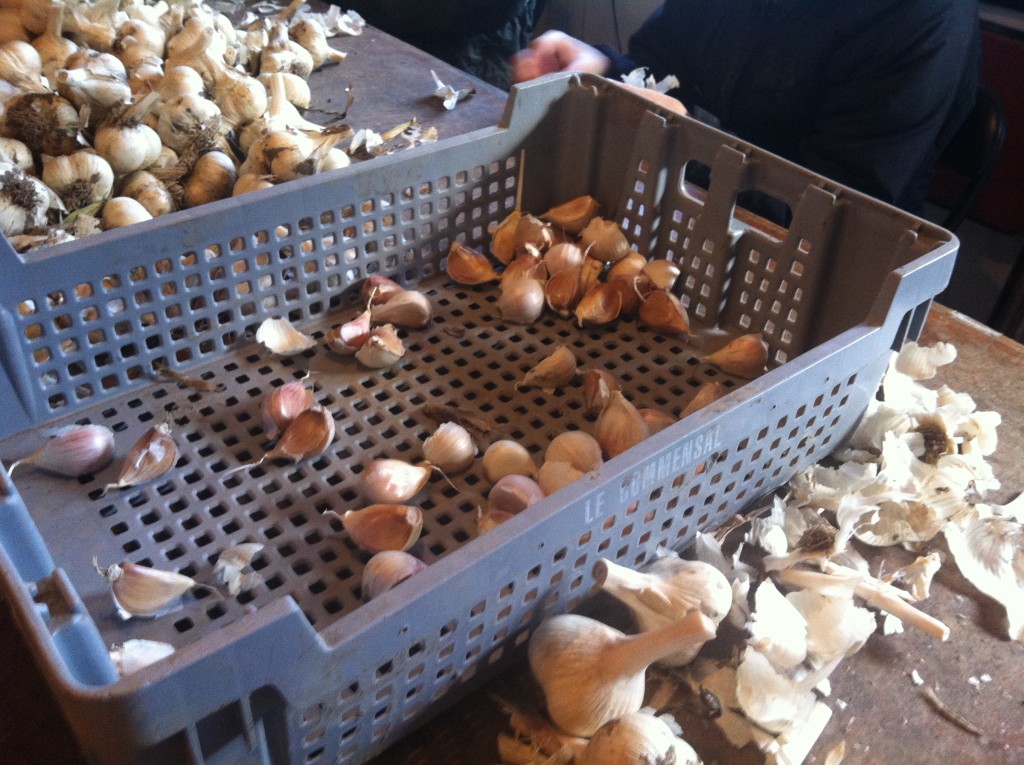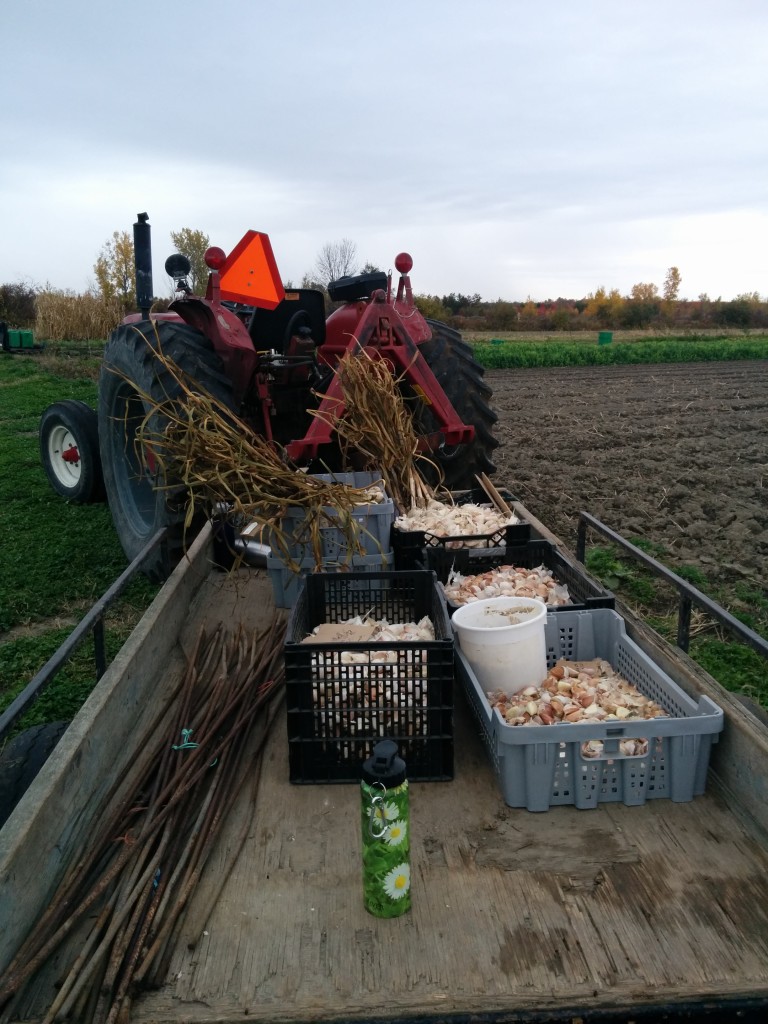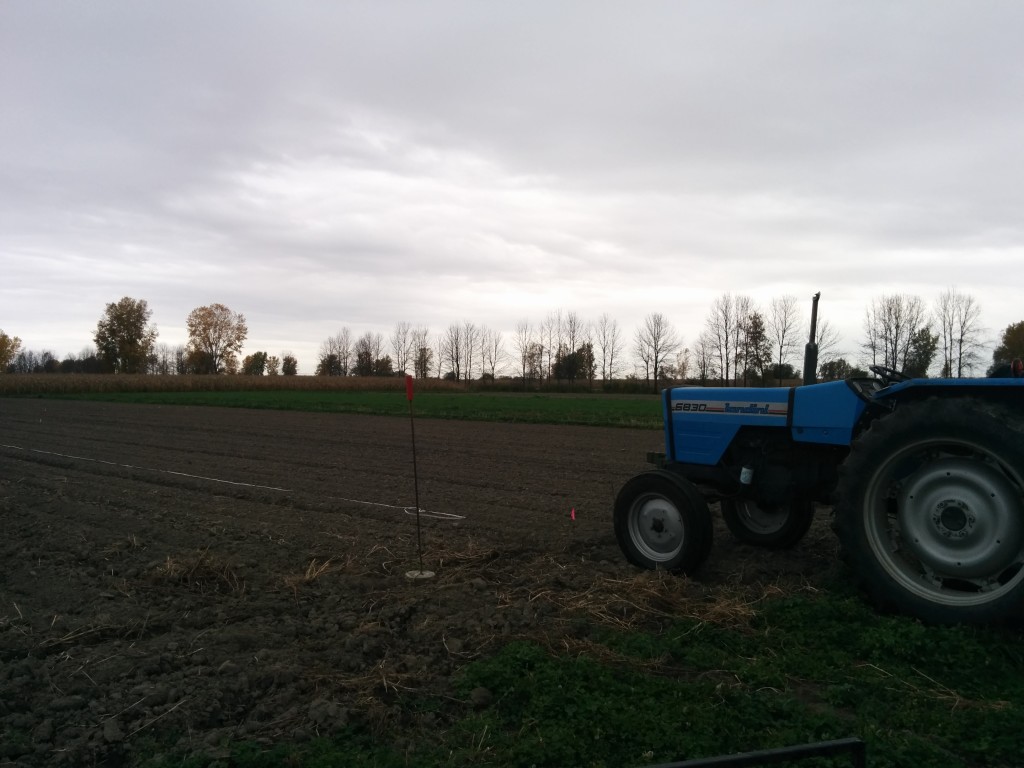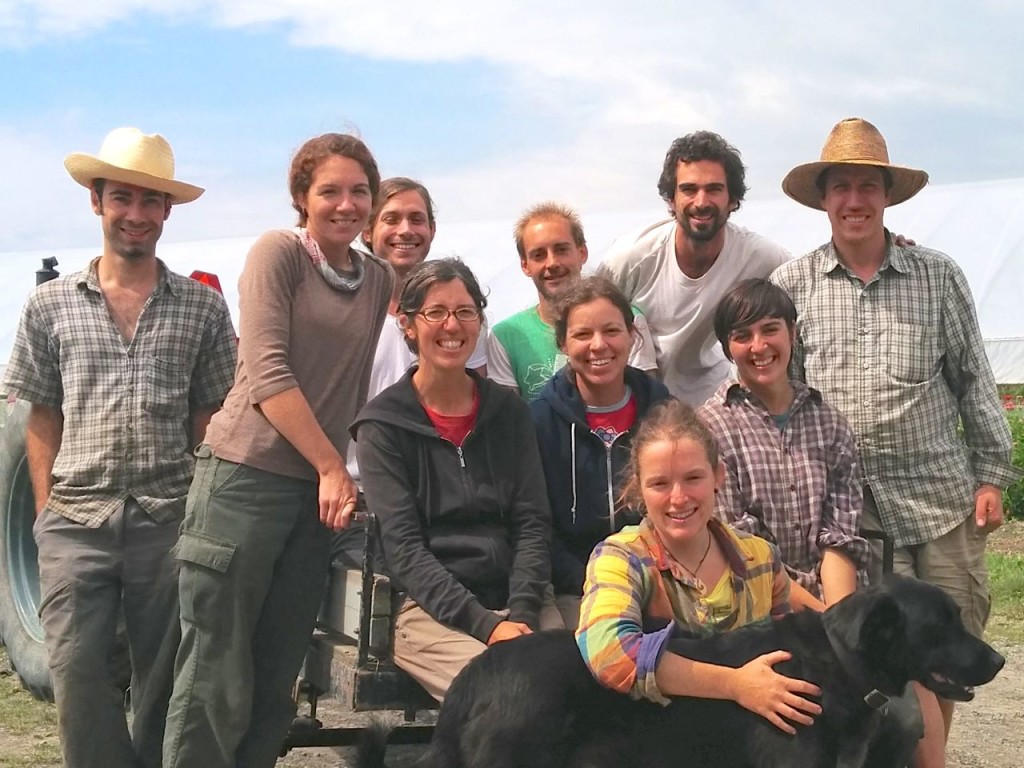the great garlic journey
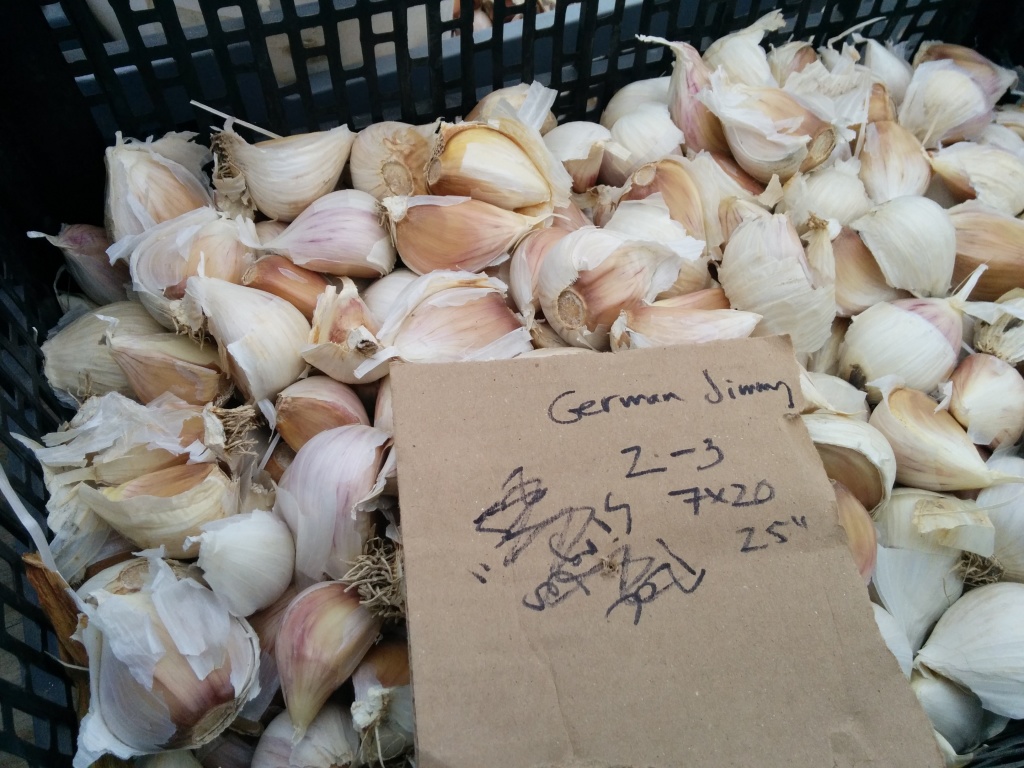
some “german jimmy” garlic derived from Jamie Quinn’s stock (Ferme Terre Bleue), cracked and waiting to be planted.
just look at those big, fat juicy cloves of garlic. if you’re one of the lucky people who likes to eat garlic, and often (and can, without making your stomach too upset), you’d probably want to peel one of those caïeux, chop it up and put it in your supper tonight. too bad it’s not for eating.
it’s for planting. the thing about garlic is that – sci fi warning here – it’s all clones. delicious, delicious clones. you don’t have to be afraid of these clones, it’s just that garlic doesn’t really like to have sex (kind of like bananas).
garlic is reproduced by farmers by planting cloves of last year’s bulbs. (even wild garlic seems to prefer asexual production. for more information about garlic seeds please see this excellent blog post by Ted Jordan Meredith). in north america garlic planting happens in the late fall. at ferme coopérative tournesol, we planted next year’s crop in the last week of october. those little cloves, a few inches underground and covered with straw mulch, will hibernate during the long québec winter and emerge victorious in the spring to become next year’s feast, and planting stock. exciting!!!
but i’m getting ahead of myself. come with me on the garlic journey and you’ll see just how much work and love goes into this spicy little allium.
part one: growth
the garlic clove survives the winter, even our fierce québec winter (and siberian as well – there is even a garlic named Siberian!), and its green shoots emerge in the early spring, poking through the soil to seek out the growing light. it is quite a sight to see after a long winter – as my friends at ferme lève-tôt put it after witnessing the garlic resurrection one spring, “nature is powerful!”
garlic is in the allium family of plants and thus, in growth, resembles onions, shallots and green/spring onions. garlic’s stems are more rigid than those of onions however, and can even be a little bit pokey.
at the farms i’ve worked at, including tourne-sol farm, we have mulched the garlic in the fall after it’s planted. this means putting down straw (not to be confused with hay, which is more for feeding animals). the garlic will wiggle its sprout through the soil and the straw in the springtime as long as it’s not too thick. mulching has two major benefits: insulation for the garlic through the winter, especially in areas of minimal or no snow cover, as well as water retention in the spring and summer; and the straw acts as a weed deterrent, preventing sunlight and water from reaching the weed seeds on the surface layer of the soil. thus mulching makes growing garlic a helluva lot easier.
even with mulching there is some handweeding work to do to care for the garlic. in an ideal situation there would be very little of this kind of activity, but depending on how thick your mulch is and/or how weedy your soil is there could be all sorts of lambsquarters (“wild spinach”), pigweeds (beautiful things that are related to amaranth) and grasses poking out of the straw.
and of course garlic has other problems – namely, diseases and pests, like all crops. the leek moth, nominally more famous for eating leeks and making them all kinds of disgusting, also likes to munch on garlic and onion plants. these little critters bore their way into the stems and munch away, causing much destruction. crop rotation and floating row cover (basically a protective mesh blanket for crops) can help with the destruction if there’s an infestation.
as for garlic diseases, this is an unfortunate world i don’t know too much about, having luckily not encountered very much of it. but since onions and garlic are so closely related, at tournesol we kept the crops separately from each other after harvest and during storage, so as to prevent any diseases from spreading from one crop to another. because garlic is propagated asexually, if you use diseased cloves as planting stock, the next year’s crop will also be diseased, and the cycle will continue. the diseases can also remain in the soil and therefore be very difficult to avoid or get rid of. another good reason to utilize crop rotation and diversified organic agriculture.
part two: harvest!
this section gets an exclamation point because it’s very exciting! (well, truthfully, garlic is very exciting in general, so attache ta tuque). it’s the point in the story where you get to see what was buried slightly underground – a bit like finding hidden, spicy delicious treasure.
under the beautiful azure sky and the hot august sun, we bent over pulled the garlic roots out of the ground, still attached to their stalks, one 300-foot bed at a time (this was after someone broadforked the ground to loosen it, or came through with the undercutting implement on the tractor, pictured here). we put these stalks into piles of five and then fifteen heads. then another member of the team came by to tie the bundles together. after we harvested a whole bed in this manner, we’d come by with the farm wagon and stack as many bundles as we could into it, destined for the hayloft in the barn.
once the garlic was pulled, bundled, tied, lugged and finally carried up the stairs into the hayloft of the barn, it was time for some organizing, and hanging. dan the garlic man came up with the master plan, based on variety and harvest date, and we got to hanging these babies up to dry. drying the garlic helps them cure, get a good flavour, and ensure that moisture doesn’t cause the bulbs to rot or become diseased.
part three: trimming & classifying
the next stage of the garlic adventure (in a commercial context especially) is trimming the garlic bulbs, and then classifying the garlic bulbs by size. classifying them ensures that when the bulbs are sold the farmer is getting an adequate profit for the labour she’s put in. it takes more time and more effort to grow a larger garlic bulb. this is due to a few factors: if the garlic is not adequately mulched or weeded, weed pressure can suck up the available nutrients and water instead of the garlic bulb, causing it to grow less quickly. there are also diseases that need to be dealt with. of course some garlic varieties can get bigger (and bigger faster) than others, but in general it takes time to be grown out to a nice 3 in.-diameter head.
once the bulbs are trimmed, an assembly line of workers deals with the different batches (different varieties and their bed locations) to classify the heads.
the board you see in the image above was one of our two classifying boards, created with nails to denote the different possible widths. sometimes the garlic bulbs were somewhat irregular and you had to pick which was the closest to the average width of the bulb. the smallest bulbs were not caught by the apparatus, while the largest barely fit into the 3-in wide diameter marking!
after the bulbs were classified, they were retied into bundles, and hung up again, organized by size. this made it easier to determine which bulbs would be saved for planting (the biggest ones, usually), which would be sold in specialized variety packs, which would be sold individually and which might be sold in bulk at a discount (the smallest bulbs). it also gave the bulbs more time to dry while we compiled our inventory.
part four: making $$$$!!!!
now, of course, growing garlic is good fun and all, and it sure tastes good, but it is also a major source of income for many farmers, since quality organic garlic is a highly sought-after project. one of the biggest opportunities for ferme tourne-sol to sell its garlic is at the annual Ste-Anne-de-Bellevue Garlic Festival, organized by the Ste-Anne-de-Bellevue Farmers’ Market. i was unable to attend the garlic festival this year but i heard it was a great time. there are workshops, presentations, garlic growers from all over the region, and even garlic desserts!
part five: good crack
before all the garlic is sold, farmers will evaluate how much they’d like to plant to be able to harvest the next year. (garlic growing – and farming in general – is always about thinking a few steps, or years, ahead!). this way they can set aside the number of bulbs that will assure the correct number of cloves will be available for planting. because a garlic bulb can hold up to 12 cloves (depending on the variety), one clove can go a long way in terms of future garlic production! for example, to sell 1,000 bulbs next summer, you’d only need to save about 125 rocambole heads (each with around 8 viable cloves, on average) this year! most farmers grow a lot more garlic than this, of course.
after the correct number is put aside and the fall frosts loom, so does the garlic planting date. this usually occurs in october in québec. but before the cloves can be planted, the garlic bulbs must be cracked! as they say in ireland, good crack (“craic”) is good fun, and it can be a fun, indoor, social activity during the waning days of summer. the garlic cloves are separated from each other but the garlic skin/paper is still left on, as well as the little tiny roots. in time, underground, these cloves will grow the plant that will nourish and develop a whole new garlic bulb.
part six/part zero: planting
the final step in the process is really just like the beginning of the process: planting. once the garlic had been cracked, we loaded up the tractor trailer with all the garlic-planting supplies, the map of the freshly cultivated garlic field all ready for planting, and got to laying out our bed and variety markers. at ferme tourne-sol quite a bit of garlic is grown, and many different varieties, so it’s important to keep things organized.
then we planted using the water-transplanter (see this blog post for more information on the tractors), and mulched, covering those garlic babies for the winter! and then stopped for a moment to admire our work. i’m looking forward to next year’s garlic, coming august 2015.
postscript:
many thanks to the wonderful team at ferme co-opérative tourne-sol, whom i had the pleasure of working with this summer. couldn’t have asked for a better apprenticeship and a better lesson in garlic growing!
